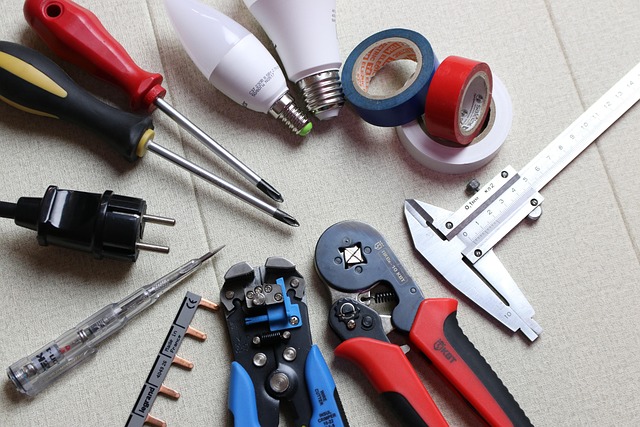An ultrasonic thickness gauge, a non-destructive testing tool, uses high-frequency sound waves to accurately measure material thickness in industries like automotive repair. Key components include a transducer for wave generation and reception, a control unit for signal processing, and a display showing measured thickness. A small probe gently pressed against the surface ensures precise measurements, with higher numbers indicating thicker materials and lower readings thinner sheets, typically in millimeters. Accurate interpretation is vital for structural integrity and proper alignment during repair. Regular calibration, clean environment, proper positioning, consistent pressure, and avoiding reflective surfaces are essential for reliable data.
An ultrasonic thickness gauge is a powerful tool for measuring material thickness with precision. This article guides you through understanding and interpreting readings from this device. We’ll explore its function, components, and best practices for accurate results. Learn how to decipher measurements, avoid common mistakes, and ensure reliable data when using an ultrasonic thickness gauge.
- Understanding the Ultrasonic Thickness Gauge: Its Function and Components
- Interpreting Measurements: Deciphering the Numbers
- Best Practices for Accurate Readings and Common Mistakes to Avoid
Understanding the Ultrasonic Thickness Gauge: Its Function and Components

An ultrasonic thickness gauge is a non-destructive testing tool that uses high-frequency sound waves to measure the thickness of materials, particularly in industries like automotive repair, collision repair, and tire services. It operates by emitting an ultrasonic pulse through the material and calculating the time it takes for the echo to return. This technology is reliable and accurate, making it a valuable asset for ensuring quality control and precision in various applications.
The gauge consists of several key components: a transducer that generates and receives the sound waves, a control unit that processes the echo signals, and a display that shows the measured thickness. The transducer is typically a small probe that’s gently pressed against the material’s surface. By sending ultrasonic pulses and analyzing the returned echoes, the gauge provides real-time data on the material’s thickness, ensuring measurements that are both consistent and reliable.
Interpreting Measurements: Deciphering the Numbers

When using an ultrasonic thickness gauge, understanding the displayed measurements is key to accurate interpretation. The numbers you see represent the thickness of a material, typically in millimeters or fractions thereof. A higher number indicates a thicker piece of metal, while a lower reading signifies thinner sheets. For instance, a reading of 2.5 mm means the material’s thickness is 2.5 millimeters.
In the context of automotive collision repair, auto body repair, and auto frame repair, these measurements are crucial for reassembling cars accurately. The gauge allows technicians to ensure panels and frames are aligned properly by providing precise thickness data. By deciphering the numbers, they can make informed decisions during the repair process, ensuring structural integrity and a seamless fit of replacement parts.
Best Practices for Accurate Readings and Common Mistakes to Avoid

To ensure accurate readings from an ultrasonic thickness gauge, best practices include maintaining a clean and dry environment, properly positioning the sensor, and ensuring consistent pressure during each measurement. Calibrating the device regularly according to the manufacturer’s guidelines is also crucial to guarantee precise results. Users should avoid common mistakes such as applying excessive force on the sensor, which can skew readings, or measuring highly reflective surfaces without appropriate preparation, as this can lead to inaccurate data.
Additionally, when dealing with tasks like vehicle restoration or auto body repair, it’s essential to remember that ultrasonic thickness gauges are not suitable for all materials. They work best on non-metallic materials and can be less accurate on ones with high acoustic impedance. In cases of car damage repair, consider the condition of the surface; if it’s rough or has debris, cleaning it first will improve measurement accuracy, ensuring reliable data for informed decisions in auto body restoration projects.
An ultrasonic thickness gauge is a powerful tool for accurately measuring material thickness, essential for quality control in various industries. By understanding how this device works and adhering to best practices, users can reliably interpret readings. Deciphering the numbers requires knowledge of the gauge’s capabilities and limitations. By avoiding common mistakes, such as neglecting calibration or improper positioning, you ensure accurate results. With these guidelines, professionals can confidently navigate the world of ultrasonic thickness measurement, making informed decisions based on reliable data.














